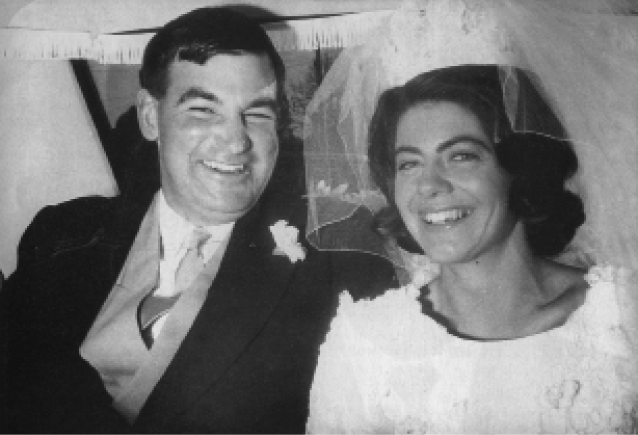The Preface of New Zealand Police CREWE Homicide Review of 2014, written by Detective Superintendent Andrew J Lovelock, gives a succinct and accurate summary of the Crewe murders. This Preface quotes Pages 11-14 verbatim (includes surnames in capital letters).
On 18 June 1966, David Harvey CREWE (known as Harvey) married Jeannette Lenore DEMLER at St George Church, Ranfurly Road, Epsom, Auckland. Jeannette thereafter was known as Jeannette CREWE.
The Preface of New Zealand Police CREWE Homicide Review of 2014, written by Detective Superintendent Andrew J Lovelock, gives a succinct and accurate summary of the Crewe murders. This Preface quotes Pages 11-14 verbatim (includes surnames in capital letters).
On 18 June 1966, David Harvey CREWE (known as Harvey) married Jeannette Lenore DEMLER at St George Church, Ranfurly Road, Epsom, Auckland. Jeannette thereafter was known as Jeannette CREWE.
The couple took up residence at the farmhouse of a 340 acre property on State Highway 22 at Pukekawa.
The property had been bequeathed to Jeannette and her sister, Dianne Heather DEMLER (known as Heather), by her uncle Howard CHENNELLS, who died following an accident in 1950.
Prior to his marriage to Jeannette, Harvey CREWE arranged to purchase a half share of the property from Heather, who was resident in the United States of America. The sale was completed in August 1966.
Jeannette’s parents, Lenard and May DEMLER, owned and occupied the adjoining 465 acre farm. The CREWES worked hard on the property and were viewed as successful farmers, running both sheep and beef stock.
In 1967, the CREWE farmhouse was burgled and jewellery items and other personal property belonging to Jeannette were stolen.
In December 1968, Jeannette gave birth to their daughter, Rochelle.
A week later, on 7 December 1968, whilst the CREWES were absent from the property, a fire occurred in a spare bedroom at the property. There was a suspicion that the fire may have been caused by a cigarette or an electrical fault, however, the CREWES believed that it was the result of arson.
Six months later on 28 May 1969, a hay barn located on the property near the CREWE farmhouse caught fire and was a total loss. Again, the cause was not definitively established (it was ruled as spontaneous combustion) and may have been the result of arson.
On 17 June 1970, the CREWES were murdered in their farmhouse.
On 22 June 1970, the scene and the CREWES’ disappearance was discovered.
Eighteen-month-old Rochelle was found unharmed in her cot by Lenard DEMLER. Evidence of violent activity was observed in the lounge of the CREWE farmhouse. Both Harvey and Jeannette were missing. A Police investigation commenced into their disappearance, which was viewed as a potential homicide at an early stage.
Extensive searches over large areas of farmland proved unsuccessful.
On 16 August 1970, Jeannette’s body was located in the Waikato River. She had been shot with a single .22 bullet to the head.
On 16 September 1970, the [sic] Harvey’s body was also located in the Waikato River. He, too, had been shot with a single .22 bullet to the head.
From the outset, the Police investigation focussed on Lenard DEMLER as being the likely culprit.
From mid-October 1970, as a result of evidence located on the THOMAS family farm, Arthur Allan THOMAS emerged as a significant person of interest and suspect. On 11 November 1970, Arthur THOMAS was arrested and charged with the double murder.
In February 1971, following a Supreme Court trial in Auckland, Arthur THOMAS was convicted of the double murder and sentenced to life imprisonment.
Initial appeals that followed were unsuccessful.
As a result of the Court of Appeal considering that the conviction of Arthur THOMAS was unsafe, he was granted a re-trial that was held in April 1973.
Again Arthur THOMAS was convicted of the double murder and his life sentence re-imposed.
Public opinion supported by media and journalistic interest, coupled with lobbying to Government, led to a review of the CREWE murders by an independent Queens Counsel. This review resulted in a report to the Prime Minister which concluded that the case against Arthur THOMAS may not have been established beyond reasonable doubt.
In December 1979, on the recommendation of the Prime Minister, the Governor-General granted Arthur THOMAS a free pardon.
In 1980, the Government appointed a Royal Commission of Inquiry (RCOI) to examine the circumstances that led to the conviction of Arthur THOMAS for the murder of the CREWES.
The findings of the RCOI identified the Officer-in-Charge of the homicide investigation, Detective Inspector Bruce HUTTON, and one of his investigators, Detective Lenrick JOHNSTON, as being guilty of corruption. The RCOI found that they had fabricated evidence by planting a .22 cartridge case (Police Exhibit 350) that had been fired by a rifle owned by Arthur THOMAS in the CREWE garden, for the purposes of incriminating him.
Further, the RCOI found that during the second trial Detective Inspector HUTTON was responsible for fabricating evidence in that he exchanged Police Exhibit 343, a .22 brass cartridge case found on the THOMAS farm, with another brass cartridge case that matched Police Exhibit 350.
The Review Team [2014 Report] record that former Detective Lenrick JOHNSTON died in 1978 and that former Detective Inspector Bruce HUTTON died in 2013.
Detective JOHNSTON obviously could not have given evidence at the RCOI to defend himself. Former Detective Inspector HUTTON did give evidence and was disbelieved on a number of issues by the Commissioners.
The RCOI recommended that Arthur THOMAS receive over one million dollars in compensation[1], which was agreed to by Government and paid.



Leave a Reply